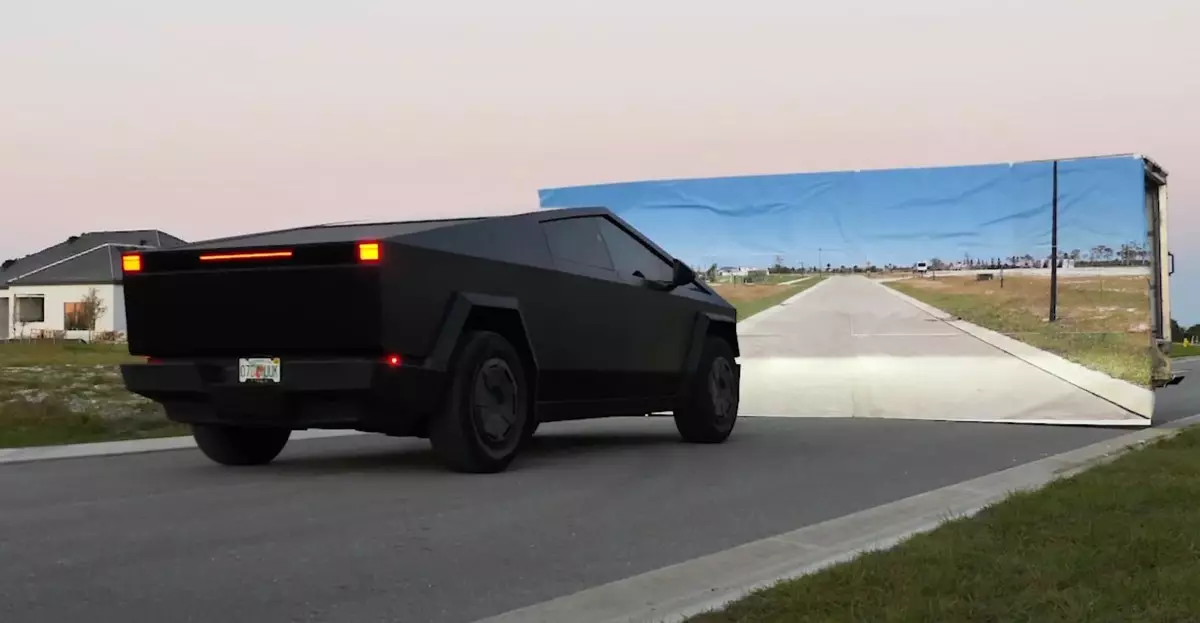In the ever-evolving world of electric vehicles, Tesla’s Full Self-Driving (FSD) technology has often been heralded as a groundbreaking advancement. However, recent YouTube experiments have shed light on the practical capabilities of this controversial feature, sparking a lively debate among enthusiasts and skeptics alike. Enter the “Wile E. Coyote” wall test, popularized by YouTuber Mark Rober, which prompted further testing from another creator, Kyle Paul. This series of tests has ignited a firestorm of questions about Tesla’s AI-driven technology and its readiness for real-world driving scenarios.
The Original Test: Enthusiasm Meets Limitations
Rober, known for his engaging engineering projects, initially drew attention by pitting Tesla’s FSD against a painted wall, crafted to resemble an infinite road. The expectation was that the technology would gracefully halt before the obstacle. However, the result was disappointing; the car failed to detect the wall and crashed. This sparked a mix of amusement and concern among viewers and prompted a flurry of criticism, particularly regarding the readiness of Tesla’s AI technology for everyday use. The test was emblematic of larger struggles inherent in deploying advanced driver assistance systems reliably and safely.
A Ray of Hope in Kyle Paul’s Follow-Up
Kyle Paul further examined FSD’s capabilities using two different Tesla models: the Model Y and the Cybertruck. While Paul’s test with the Model Y mirrored Rober’s lackluster results— the system failing to recognize the artificial barrier— hope flickered with the Cybertruck’s performance. This vehicle, armed with the latest HW4/AI4 capabilities, successfully detected the wall and came to a halt, demonstrating that progress is indeed being made. The stark contrast in results between the two models not only highlights the ongoing developmental journey of autonomous driving technologies but also raises questions around the consistency and reliability of FSD features across Tesla’s lineup.
Repercussions in the EV Community
This testing saga has further polarized opinions within the electric vehicle community. On one hand, ardent Tesla supporters champion the rapid pace of innovation, citing the promise of AI advancements as a game-changer for the automotive landscape. On the other hand, critics are taking the opportunity to point out the potential hazards of prematurely rolling out such technology without sufficiently robust testing. The mixed results from these YouTube tests underline the necessity for ongoing scrutiny, refinement, and transparency in Tesla’s approach to FSD development.
The Road Ahead: Navigating Expectations
As Tesla navigates this challenging terrain, the focus must shift from hype to action: how will the company reconcile the fantastical aspirations of self-driving with the sobering realities of engineering? The road to an autonomous future is riddled with regulatory hurdles, ethical dilemmas, and technical challenges that require careful navigation. For now, while the advancements showcased by models like the Cybertruck are encouraging, they also serve as a reminder that the journey toward fully autonomous driving is still in its infancy. Tesla’s path forward will demand a delicate balance between ambitious innovation and the fundamental need for safety and efficacy on our roads.

